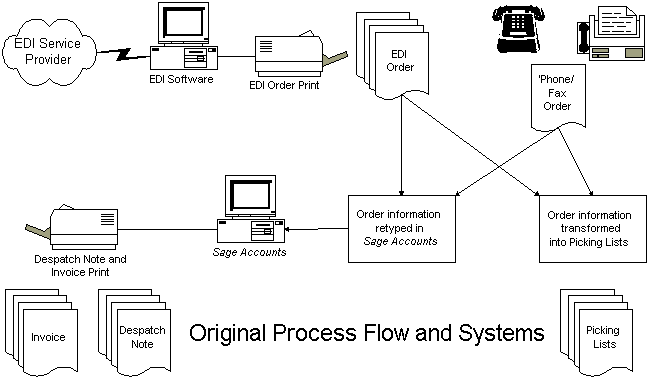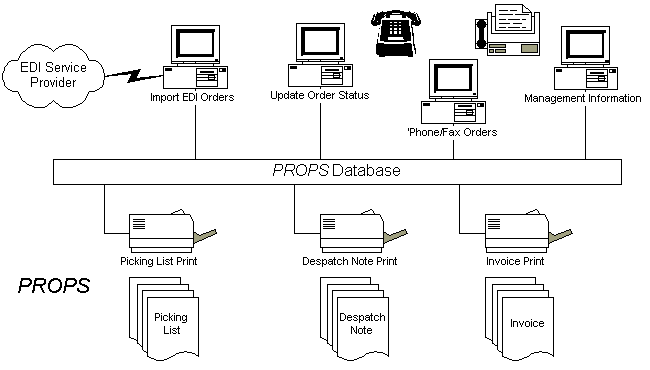In 1995 the fresh pasta manufacturer's success began to pressurise its systems - consumer appreciation of their real Italian pasta taste was bringing in more, and more varied, numbers of orders. In addition, the major multiples were increasingly insisting that suppliers accept orders through EDI - electronic data interchange.

Order processing was comprehensive, but complex. With the traditional telephone and fax in-coming lines already busy, the EDI order surges would cause order fulfilment processes to crunch as the traditional manual operations used to manufacture and despatch customer orders could not keep up. This was especially true as orders began to become more complex - even regular orders differed in some, often small way... a different flavour, a new promotional price. Plus, invoices were raised against each order, not on what was actually despatched. Even for the sharpest-eyed manager, trying to find out what was going on where, was not easy....and still the orders tap could not be turned off!
The Finance Director said: “Our customers and consumers liked what we were giving them. But increasingly we noticed the risk of error in our processes. With three different ways for orders to come in, then the conversion of order information from electronic sales entry formats into the manual forms that production and despatch used, there were numerous opportunities for errors to inadvertently occur. On top of that were the problems we would have when one or more of our key staff, the old hands, were off for whatever reason - things would require fast and accurate effort to recover. Finding and sorting rogue orders without their expert knowledge could be a nightmare. We needed to move their expertise into the system. And finally, senior management couldn’t readily track, measure or manage in real time what was going on. That had to change - there had to be a better way.”
After a period of analysis and discussion, a new order processing and despatch workflow was designed. It would provide a single repository for all orders, no matter how they came in. Critically, the context of each order would be unequivocal - orders could only contain product information relevant to the customer and promotional pricing would be controlled automatically. The repository would also show the status of orders at any time, help staff understand what they need to do next, and provide immediate source data for management reporting.

Benefits came quickly and across several departments. Finance found that cash flow could be improved by invoices being generated on-demand, daily, rather than as a month-end batch. Integrity of financial data was improved by the automatic validation of customer-specific prices and the removal of transcription errors. The improved availability of correct data enabled Despatch to get the right goods onto the right lorry with the right accompanying despatch note, with far less trouble! For the marketing manager the changes saved him two to three days every month when compiling his forecast and budgets.
Senior management receive accurate ad hoc and regular reports. Staff generally are less pressured when orders surge, and can enjoy greater variety of work through flexible working practices, and hence overall enable the company to handle higher volumes with less errors using the same number of staff.
As the Finance Director concluded: “It’s interesting what’s happening - at Board level, there is more recognition that a traditional, well run business can improve it’s efficiency by the application of IT. We are now looking at other new ideas and new technologies. I certainly know that I will have my hands full - our major customers are now clamouring for their invoices to be sent by EDI!”
Home -> Process Innovation Projects ->Case Study: Order Processing
© 2006 Infognosis Limited. All Rights Reserved. For more information contact sales@infognosis.co.uk